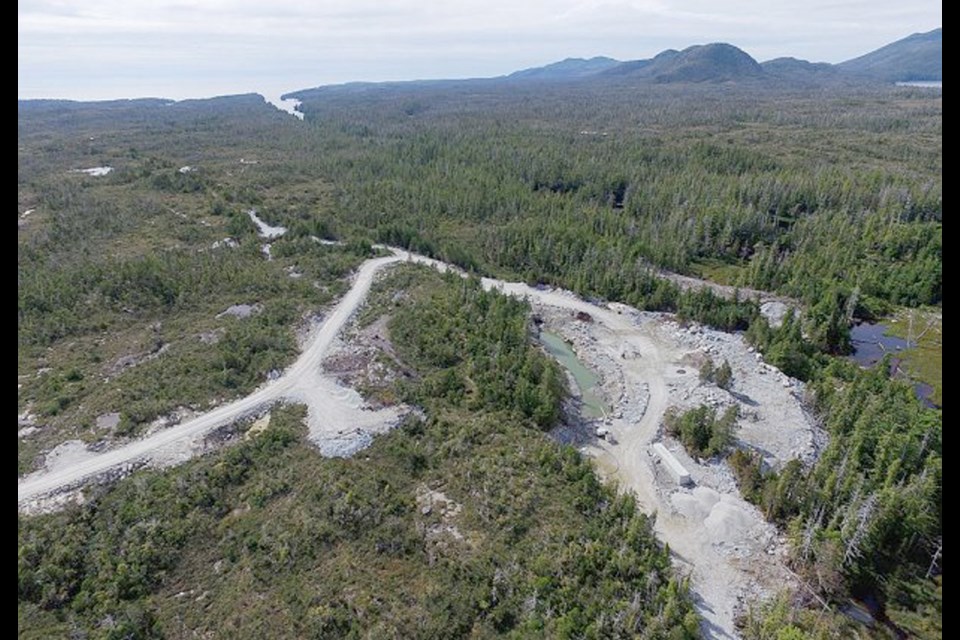Environment Canada has launched an investigation into a pollution spill at Banks Island Gold’s Yellow Giant mine in northwestern B.C. over potential violations of the Fisheries Act.
The B.C. government has said Environment Canada will lead the investigation, supported by the B.C. Conservation Officer Service.
Environment Canada would not provide an official for an interview.
“Environment Canada’s enforcement branch is currently investigating to determine whether there have been any violations of the pollution prevention provisions of the Fisheries Act,” Environment Canada spokeswoman Barbara Harvey said in a written response. “As the investigation is ongoing, it would be inappropriate to provide further information at this time.”
The gold mine operation 110 kilometres south of Prince Rupert was shut down earlier this month by the B.C. Energy and Mining Ministry following an order by the B.C. Ministry of Environment to stop polluting.In an interview on Tuesday, B.C.’s chief inspector of mines, Al Hoffman, said his office is co-operating with other agencies on the investigation.
Hoffman said while sediment-laden water released into the environment is a concern, he does not believe any tailings were spilled.
“I don’t think it’s that serious,” he said.
Tailings are the finely-ground rock containing potentially toxic metals that remain after ore is processed.
He said Yellow Giant was violating its permits, running ore from an exploration site through the main mine site and storing waste in an underground site, which it was not authorized to do.
The company will have to come up with a plan acceptable to the province before they can reopen, said Hoffman.
The mine site is adjacent to a lake and wetland that feed a river that has salmon in it right now, according to an eyewitness, 91ԭ�� Wild executive director Ian McAllister.
The B.C. Environment Ministry has said the discharge reached the ocean through a creek, several beaver-dam-created wetlands and Banks Lake before entering the ocean at Survey Bay, but it is not believed it will harm humans or animals.
The discharge occurred approximately one kilometre from the ocean.
Toxicity testing by a third-party laboratory on undiluted tailings effluent showed 100-per-cent survival for rainbow trout and Daphnia magna (sometimes called a water flea), according to the environment ministry.
A picture of what happened at the mine site is shown in a series of 19 undated photos received around July 4 by NDP mining critic Norm Macdonald.
They show sediment-laden water spilling out of an underground mine portal, and into creeks and wetlands, as well as the unsuccessful efforts of the company to deal with the water.
In an interview, Macdonald said he received the photos and information on the pollution spill, and health and safety concerns at the mine, from a person who phoned him.
That person said they had directed their concerns to the mines ministry but they were ignored.
Macdonald said he passed on the concerns to Energy and Mines Minister Bill Bennett and Environment Minister Mary Polak in an email.
He said if it is true the province did not act on the initial complaint that is disappointing and highlights the B.C. government has learned little since the catastrophic dam failure at the Mount Polley mine last summer. “I think it still speaks to major gaps in the way the ministry is approaching things,” said Macdonald.
Hoffman said his office received an anonymous complaint on July 2 and the mine manager was contacted, but denied there was a problem.
It took until July 9 to mobilize other agencies for a visit by helicopter to the site, he said.
In a written statement, the Ministry of Environment said the July 9 visit was its first inspection of the mine.
McAllister has spent three days at the island, after travelling there by boat, examining the watershed the effluent and tailings spilled into.
He said Tuesday by satellite phone it is clear it is a salmon-bearing waterway for sockeye and possibly other salmon species.
“It is remarkable how that mine site is on the wetlands adjacent to all the spawning area,” said McAllister.
He said he has provided photos of the watershed to Environment Canada.
Banks Island Gold has not responded to The 91ԭ�� Sun’s requests for interviews this week.
In a written statement it issued last week, the company said it is in ongoing discussions with provincial officials and will continue limited activities on-site in the next few days as it works with the regulatory authorities to ensure that operations can continue uninterrupted.
The small underground mine operation received approval from the B.C. government in March 2014. At the time, the province said the company would receive a permit for the 12-month life of the mine.
According to the company’s last audited financial statements from Feb. 28 of this year filed with the 91ԭ�� Securities Administrators, it was in a poor financial position.
At the time, its liabilities (including loans and other payables) far outstripped its current assets such as cash and money they were owed — $10.74 million in liabilities to $1.36 million in assets.
The company’s president and CEO is listed as Benjamin Mossman, a professional engineer. Wolfgang Nickel, also a professional engineer, and formerly president of Teck’s Highland Valley Copper operation, is chairman of the board of directors.
��



